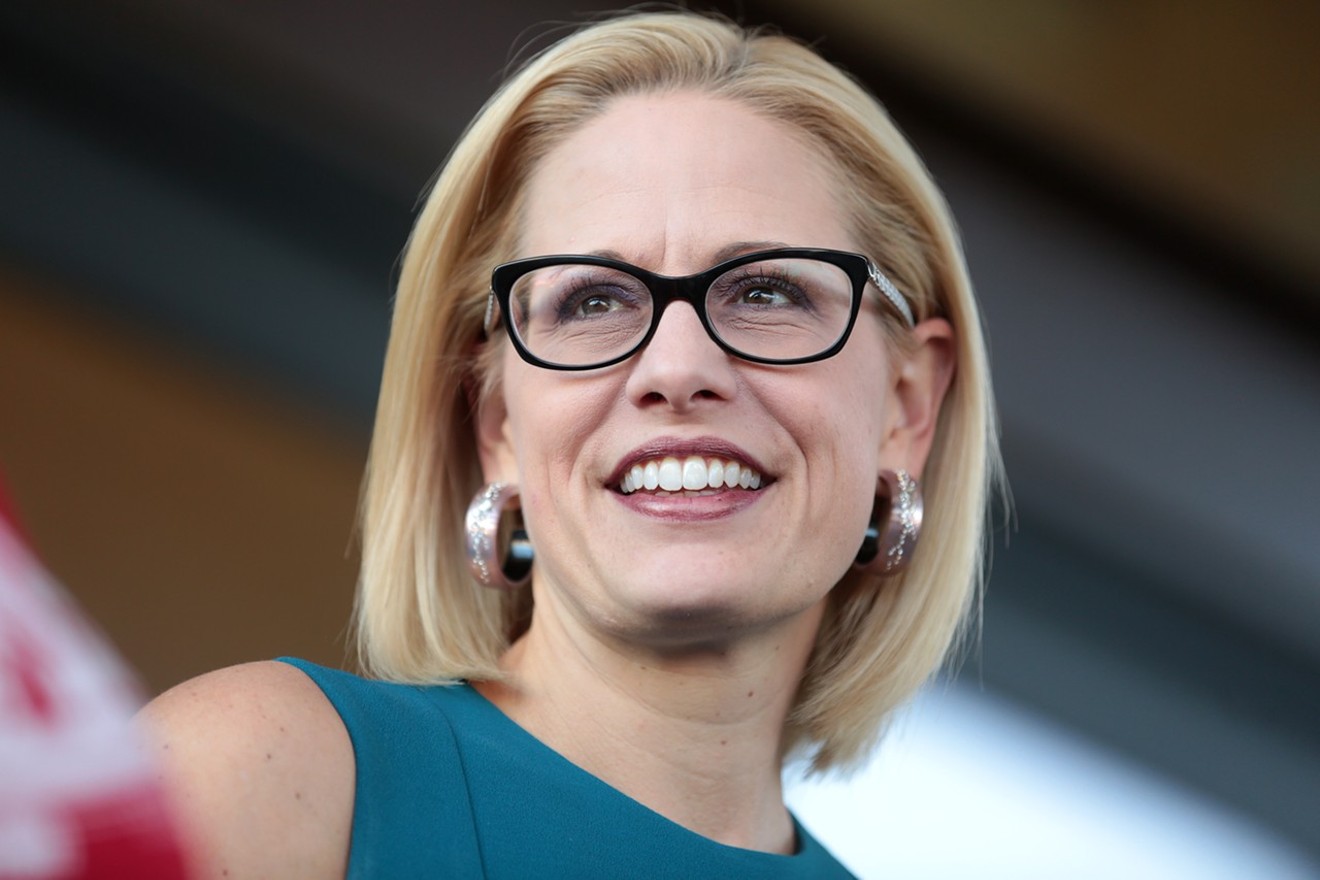Arizona has finally elected its first female senator in Kyrsten Sinema. Soon, Sinema will be one of the four people in Arizona who have served in the U.S. Senate within two years. That already seems like too many, because only two elections for senators have occurred in the past two years. But in theory, four more people could serve as senators in Arizona between now and 2025. I'll explain...
In 2016, John McCain was elected to serve his sixth term as U.S. Senator. He defeated Ann Kirkpatrick who was just elected to serve the U.S. House of Representatives in Arizona's 2nd Congressional District, and would serve alongside Jeff Flake, who was elected in 2012 for just one term before he would opt to resign instead of run for re-election. So, that's two senators Arizona had in 2018.
Fast forward to August 2018, when Senator John McCain died after the deadline to get a special election for his replacement, meaning by state law Governor Doug Ducey would have to name a successor to the Senate who would serve until the next general election, which in this instance would be until 2020.
Ducey appointed Senator Jon Kyl, who was the predecessor to Jeff Flake. That's three. Only Kyl made things interesting when he said he most likely would not continue after the current Senate session, which closes at the end of 2018.
On November 12, Republican candidate Martha McSally conceded her hotly contested Senate race to the Democrat Sinema. Sinema will become the fourth senator from Arizona since 2018 when she gets inaugurated in January 2019.
But it doesn't stop there. Ducey, who defeated Democratic challenger David Garcia in a landslide, will soon get to appoint another successor when Kyl steps down.
Let's go out on a limb and say he appoints Martha McSally to replace Kyl, who replaced McCain. McSally just received more than 1 million votes (and counting), and is obviously well-supported statewide. Good luck finding another candidate who Arizonans will support that much. So then there will be five.
However, and here's where this gets a little tricky, if McSally gets appointed in January 2019, she still has to run to get elected in 2020 to finish off McCain's six-year term, which ends in 2022. But what if she runs in 2020 and loses? That elected senator, whether it's former Arizona Attorney General Grant Woods (who was also McCain's chief of staff) or Congressman Ruben Gallego (to throw out a couple of names), would become senator number six since this year. Maybe Ducey himself would opt to resign as governor to run for the Senate.
But as just mentioned, running in 2020 means it's only a two-year term. The winner, should he or she want to remain a senator, would have to run again in 2022 for a full six-year senate term.
If that person loses, the winner in 2022 would become Arizona's seventh senator in four years.
Almost done.
Now, imagine that during all of this time changing the senator for that one seat in Arizona, Sinema's first Senate term is now just two years from being complete — meaning that in 2024 there will be yet another Senate election in Arizona. And, if somebody challenges Sinema and wins, a potential eighth senator since 2018 would start work in January 2025. (Sorry Senator-elect — don't think about it. Anyway, there's no time like the present to start campaigning.)
And you thought this Senate election was frustrating?
[
{
"name": "Air - MediumRectangle - Inline Content - Mobile Display Size",
"component": "18478561",
"insertPoint": "2",
"requiredCountToDisplay": "2"
},{
"name": "Editor Picks",
"component": "16759093",
"insertPoint": "4",
"requiredCountToDisplay": "1"
},{
"name": "Inline Links",
"component": "17980324",
"insertPoint": "8th",
"startingPoint": 8,
"requiredCountToDisplay": "7",
"maxInsertions": 25
},{
"name": "Air - MediumRectangle - Combo - Inline Content",
"component": "16759092",
"insertPoint": "8th",
"startingPoint": 8,
"requiredCountToDisplay": "7",
"maxInsertions": 25
},{
"name": "Inline Links",
"component": "17980324",
"insertPoint": "8th",
"startingPoint": 12,
"requiredCountToDisplay": "11",
"maxInsertions": 24
},{
"name": "Air - Leaderboard Tower - Combo - Inline Content",
"component": "16759094",
"insertPoint": "8th",
"startingPoint": 12,
"requiredCountToDisplay": "11",
"maxInsertions": 24
}
]











